Background to the Medal Cards/Rolls
The following is a short introduction intended to give the background to the table of file numbers used by Medal Branch (A.G.10, from 1928 renamed A.G.4 Medals, see War Office List) which feature on a number of Medal Cards and Rolls. With 558 staff in 1921, by 1928 this number had been reduced to 30 staff and only staff remained by 1935 (all figures compiled from the War Office List). Such a large caseworking as well as policy organisation required a large number of files which as is set out below in the Medal & Rolls key below were destroyed in the Arnside fire, long having served their purpose for the much smaller organisation which A.G.4 (Medals) had become by the early 1930s.
A.G.10 (Medals) was established as a War Office Division during WW1 with the huge increase in the number of service and gallantry awards during the War. Although A.G.10 was responsible for policy on the issue of medals and also their production/engraving it was only directly responsible for the distribution of medals to Officers, with the Army Record Offices responsible for the distribution of medals sent from A.G.10 to the Other Ranks. The regimental and corps medal rolls we see for the Other Ranks (including women of all ranks, who did not have military rank whatever their position) were submitted by the relevant Record Offices to A.G. 10 to agree, and then arrange the engraving of the military details of the individuals named in the Rolls. This means that the Rolls we see tend to lack the issue voucher numbers and other details (including notes of address/next of kin) that the copies of the Rolls and other documents kept at the Record Offices would often likely have featured.
In contrast the Officer rolls completed by A.G.10 include voucher numbers/codes, comments and in the surviving medal cards often the addresses of the officers or next of kin who A.G. 10 was in communication with. As is well known Officers had to claim their medals (for example via an EF9 form) whilst Other Ranks medals were allocated by the Record Office (although this did not stop mistakes, omissions or returns of medals by those who did not want them). We only see this kind of detail for the Other Ranks on some of the entries in the medal rolls when either A.G.10 or its successor A.G.4 (Medals) was dealing with a problem over the issue/return of the medals with the Record Office or the medals were issued after the Record Offices had ceased to be responsible for their issue.
The table below is based on sampling both the Medal Cards and Rolls plus information from archival sources.
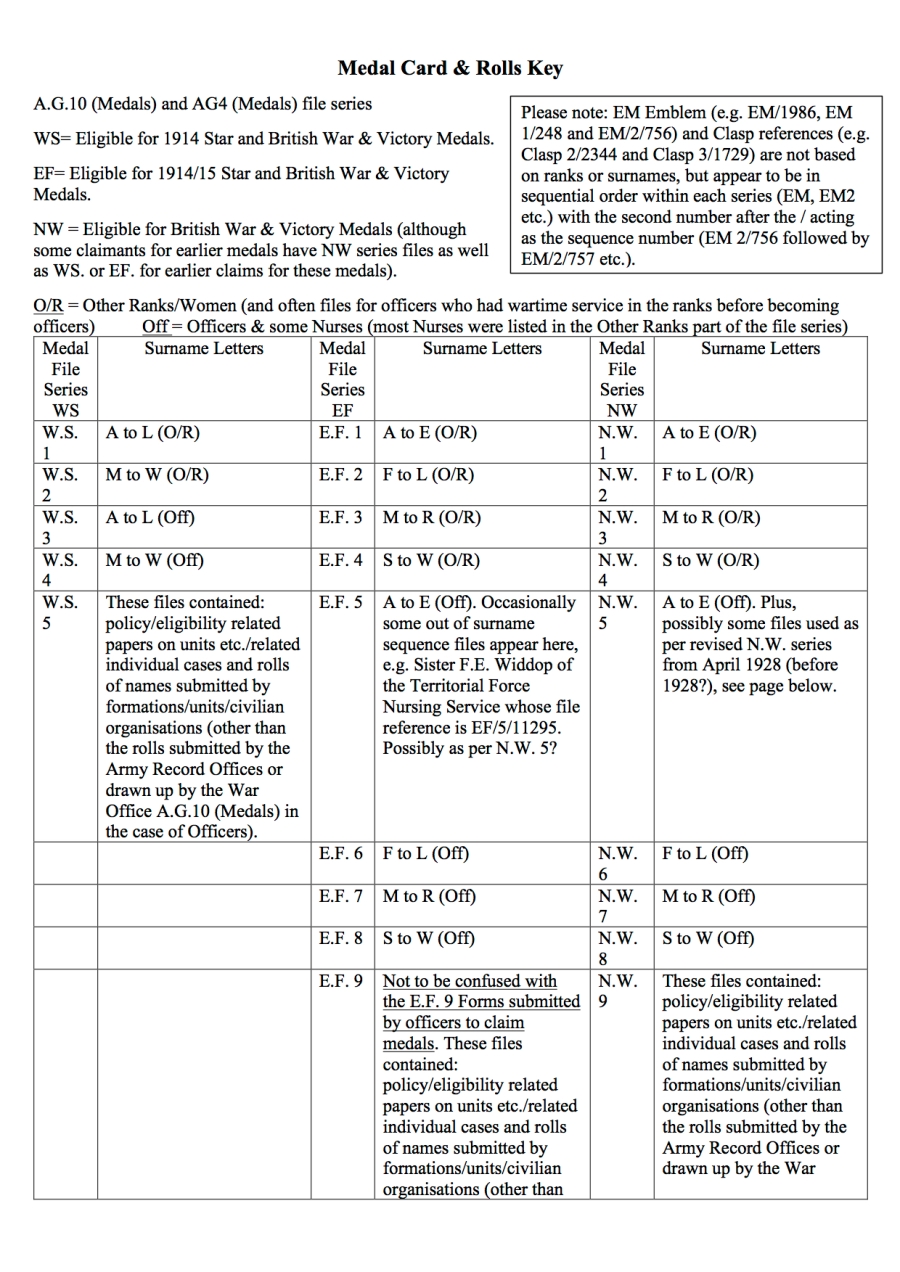
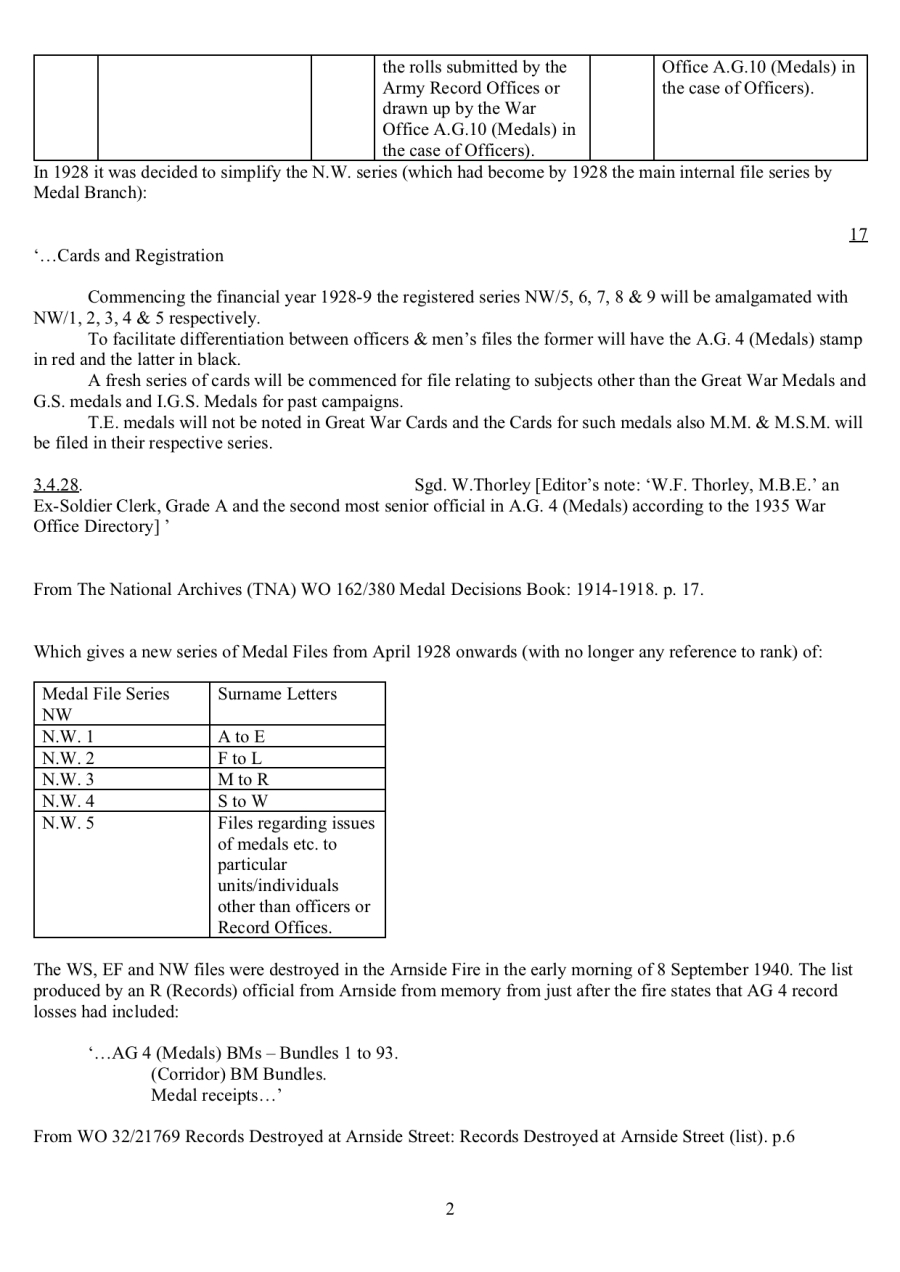
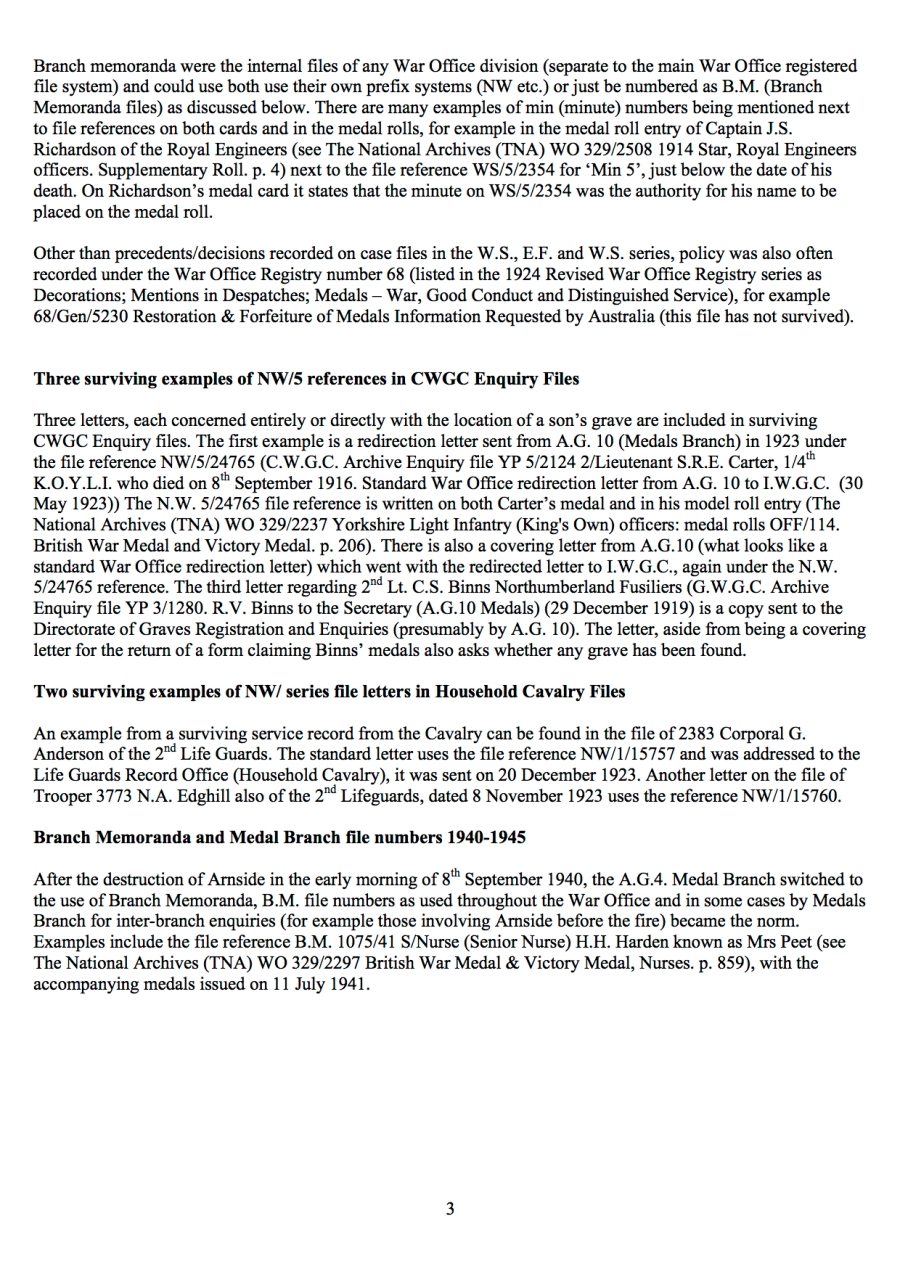 Aside from the first issue of medals, together with the production and distribution of medals to the Record Offices, the procedure for the replacement of lost medals had something in common with the judicial based procedures used by R (Records) at Isleworth and Arnside to replace documents for soldiers such as lost Discharge and Character certificates. In a fragment of a standard letter replying for a request for replacement medals the applicant is asked to:
Aside from the first issue of medals, together with the production and distribution of medals to the Record Offices, the procedure for the replacement of lost medals had something in common with the judicial based procedures used by R (Records) at Isleworth and Arnside to replace documents for soldiers such as lost Discharge and Character certificates. In a fragment of a standard letter replying for a request for replacement medals the applicant is asked to:
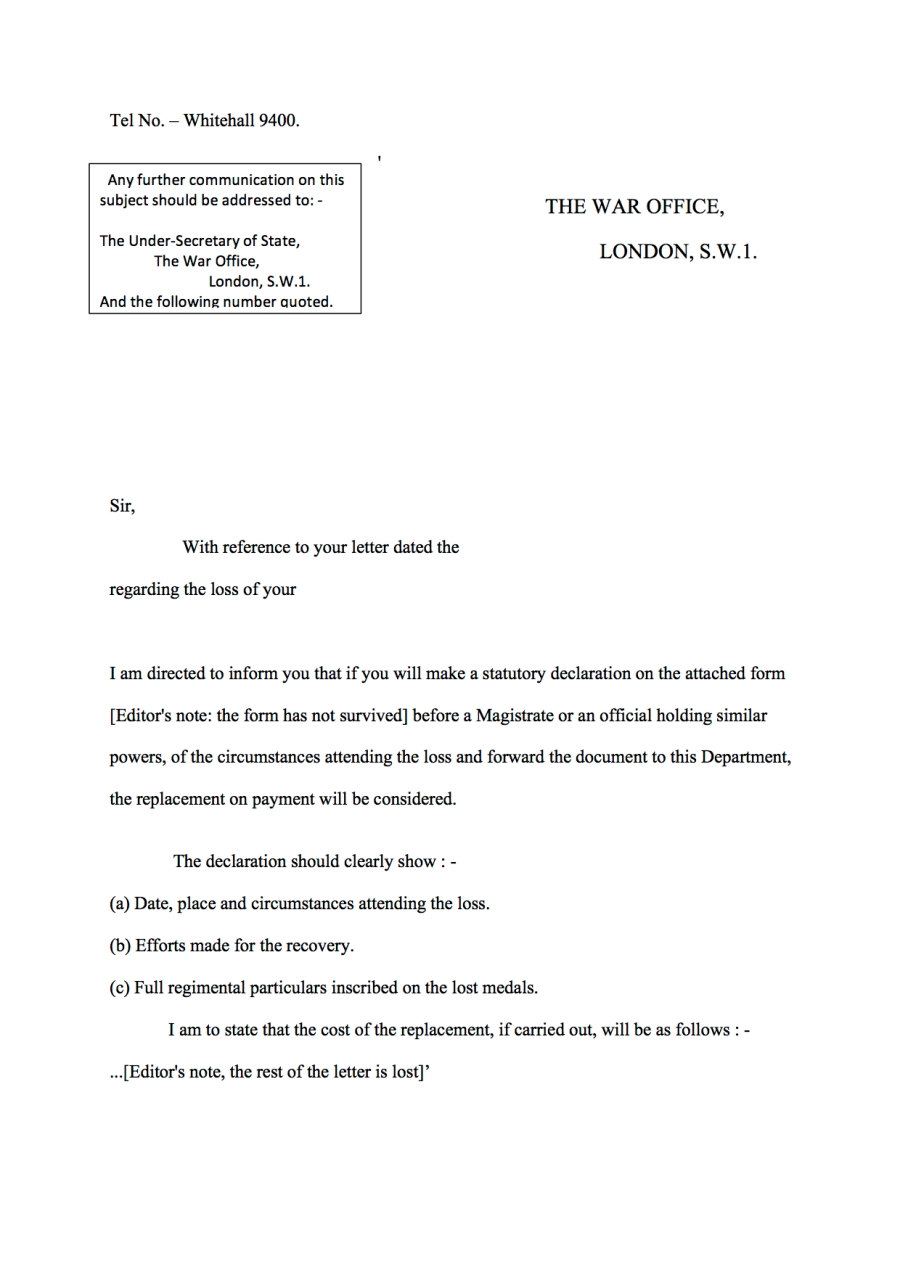
Transcribed from The National Archives (TNA) WO 162/381 Medals Branch Noting Book Volume 2. p. 14.
It is instructive to compare this letter against the War Office letter used by Arnside and Isleworth, click here (see the transcribed letter to Victor T.C. Gabb).
1926: A.G.10 tells the Record Offices that no more Supplementary Great War Medal Rolls can be submitted
As above. The handwritten additions can be seen at the end of most Great War Medal Rolls.
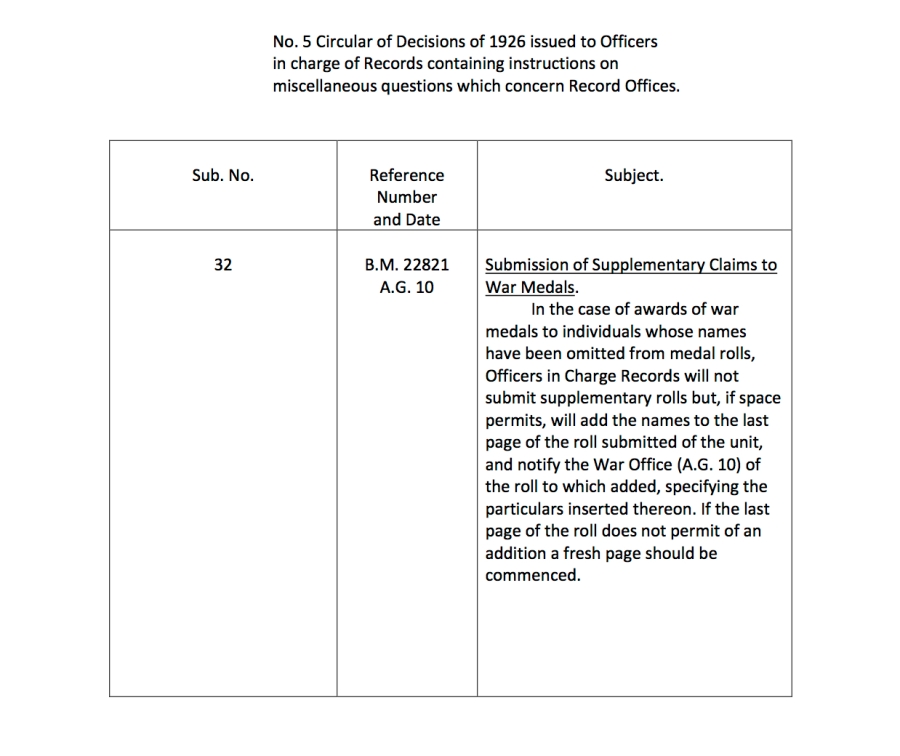
Transcribed from The National Archives (TNA) WO 162/380 Medal Branch Decisions Book: 1914-1918. Stuck onto the first page next to the inside cover.
Destruction in the 1920s and 1930s of Medal Cards and Other Documentation on the issue of Medals held by the Army Record Offices
In 1934 A.G.1c (the successor A.G.1 R as the War Office Department in charge of Record Office policy, see the articles on A.G. 1 R’s role in Soldiers Died In The Great War) issued the following which ordered the destruction of the medal rolls and other documentation they held as part of their role of issuing medals to Other Ranks: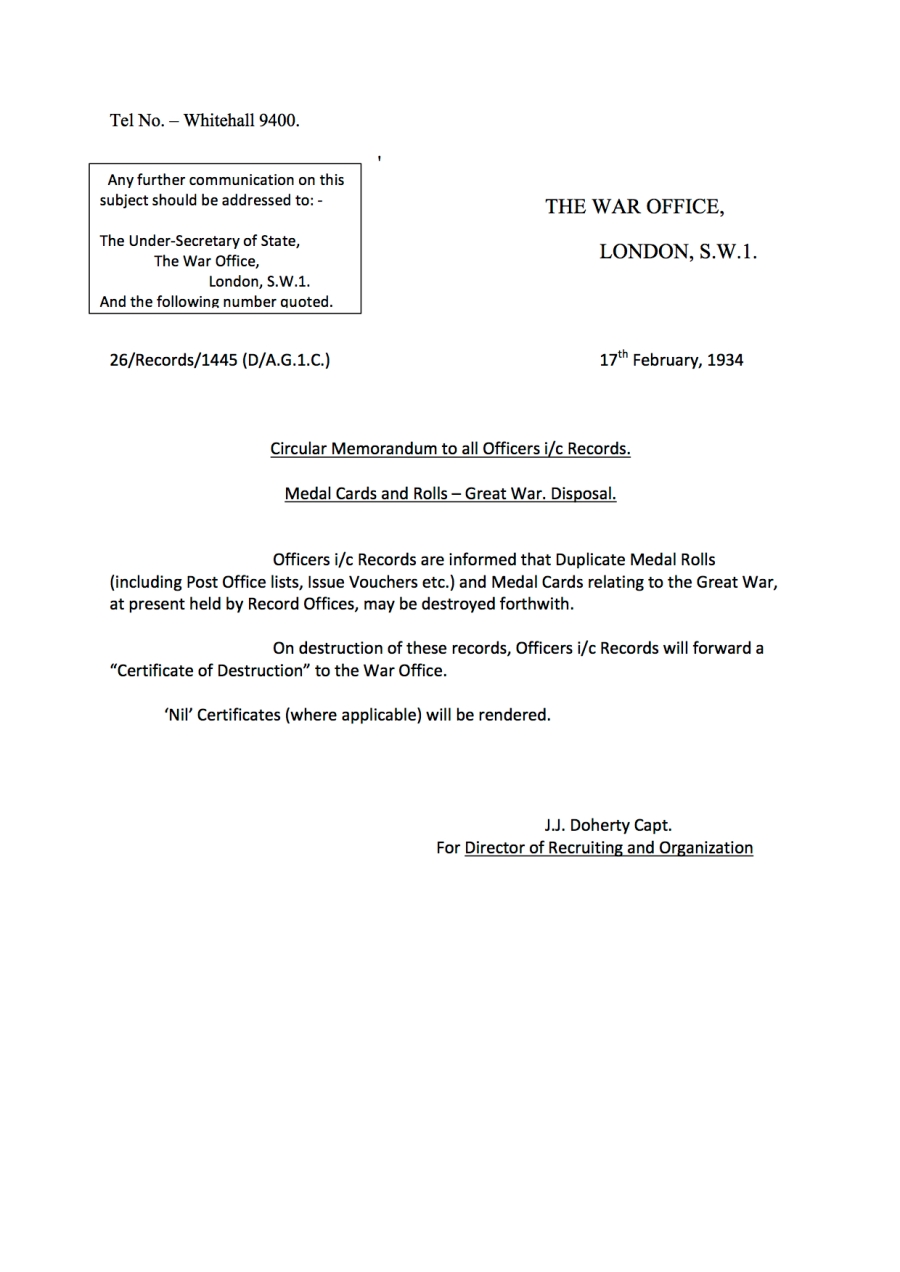 Transcribed from Ibid. p. 78
Transcribed from Ibid. p. 78
Some Record Offices had already destroyed their medal documentation before 1934, with for example the R (Records) acting as the Record Office for the disbanded Labour Corps and Machine Gun Corps (amongst others) asking in 1926 whether it could dispose of the medal cards of these two Corps (which it must have inherited from the Corps record offices) (see The National Archives (TNA) WO 162/381 Medals Branch Noting Book Volume 2. p. 209). In 1933 we have a note that all of the M.G.C. medal records held by R.Records had been destroyed (The National Archives (TNA) WO 162/380 Medal Branch Decisions Book: 1914-1918. p. 78). There is a also a surviving copy of a letter from the Warwick Records Office confirming that they were sending all of their documentation to do with the despatch of Great War medals to R (Records) at the Percy House Schools (issue and receipt vouchers and medal serial number books, although they were retaining some medal documentation for men who had stayed in the Army after 8 August 1920 when new Army numbers were introduced (see The National Archives WO 162/378 Medals Branch Decisions Book, c.1855-1935. p. 322. Copy of letter from the Officer in Charge Infantry Records Warwick to R.Records, Percy House Schools, Isleworth (24 August 1932)).
Ultimately the War Office in January 1934 checked to see whether it was okay to destroy remaining second copies of medal rolls held by Army Record Offices, with the Record Offices apparently holding 500 feet of Rolls (this must be a combined figure from all of the Offices) which were stored in portfolios ( The National Archives (TNA) PRO 17/321 War Office: General. H.C. Care War Office to C.T. Flower PRO (16 January 1934). In Care’s letter it is also stated that all Great War medals are now issued directly through A.G. 4 (Medals) and no longer through the Record Offices, so the Rolls were no longer required (Ibid). Confirmation that the destruction of the duplicate copies of the Rolls was agreed came in a letter dated the following day from the PRO (Ibid. C.T. Flower PRO to C.T. Care War Office (17 January 1934)).
Note on W.F. Thorley
William Frederick Thorley was born in 1874 in New Zealand (according to his age at death from his probate record and the place of birth given in the 1901/1911 Censuses) and by the 1901 Census was listed as an Army Pensioner. In the 1911 Census he is listed as an Army Pensioner Clerk. In 1920 Thorley was awarded an O.B.E., presumably for his work at the War Office. Thorley is listed in the London Gazette as being an Ex-Soldier Clerk, Grade A, the grade he held throughout his time at the Medals Branch (see Supplement to the London Gazette, 30 March 1920. p. 3864). He died on 14 October 1935 according to his entry in the National Probate Calendar.
